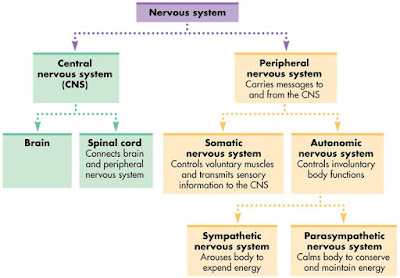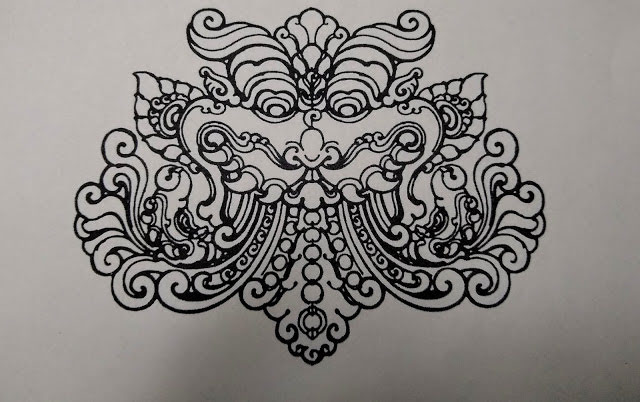April 19, 2020
This is in continuation of my last post on this topic:
Breath - Science and Scriptures where I wrote about the importance of understanding and paying attention to our breath, its connection with our mind, physiological functions and some subtle mechanics of our breathing.
In this post I am writing about different breathing techniques, their mechanics and benefits. This post deliberately does not give instructions on how to practice the techniques, one should reach out to a teacher to learn them.
Disclaimer: I don't have any institutional education in human anatomy and physiology. My writeup here is based on my understanding, primarily from the book: The Anatomy of Hatha Yoga: A Manual for Students, Teachers, and Practitioners by H.David Coulter. My sister, who is also an Anatomy professor, helped me review this. Any errors are completely mine.
****
Different Breathing techniques and their effects
Here let's see how some of the breathing techniques that are recommended in Yoga help us. This is the first time I am also delving into the science of the breath but trust me, they work even if you don't know the science. Remember, we are talking about consciously using breathing to gain some control over the autonomic nervous system that controls things involuntarily.
Our breath is like the lower branch of the tree of our body where we can pull the lower branch to get access to the higher one which is mind. The purpose of mentioning these here is to emphasize on how simple changes to breathing can help gain some control over the autonomic functions of the body in turn helping maintain overall physical and mental well being.
1. 2:1 Breathing
2:1 breathing focuses on taking twice as long to exhale as to inhale. For healthy people, 6-sec exhale with 3-sec inhale is good (
inhale and exhale through nose). This is also called
deergha rechak (
दीर्घ रेचक - long exhalation) pranayama. This breathing slows down the heart rate and creates relaxation. Thus good for people with high blood pressure.
Why make exhalation longer? Heartbeat changes pace when we inhale and exhale due to a condition called
respiratory sinus arrhythmia. When we breathe in, our heart rate increases. When we exhale, it falls. Thus
making exhalations longer makes the relaxation of heart dominant.
**
2. Pursed Lip Breathing
If you ever blew a candle, you have done it. This is a variation of 2:1 breathing but has a very specific purpose - increasing lung capacity. It is done by inhaling through the nose and exhaling slowly through the mouth with pursed lips like when we blow off the candle using our breath. This is called mukha dhouti (मुख धौति - cleansing through mouth). It helps in slowing the breath and emptying the stale air from lungs thus enabling assimilation of more oxygen, reducing shortness of breath and strengthens the lungs. This is helpful for people with obstructive lung diseases like asthma where shortness of breath is common.
Ever found yourself breathing through the pursed lips with your hands above the knees right after a good run? You were doing this breathing. No surprised why we do this right after yogic jogging to slow down the breath by increasing the amount of oxygen.
Due to lung disease or our shallow breathing habit, we may not be exhaling all the stale air out (remember the expiratory reserve volume mentioned in the
part 1 of this post?). The stale air in lungs leaves less room for fresh air that has oxygen causing lack of enough oxygen and shortness of breath.
**
3. Abdominal or Belly Breathing
This breathing is often inappropriately named as belly breathing. Abdominal-diaphragmatic is the right word as it involves both abdomen and diaphragm. Done by breathing deeply so that the lower abdomen bulges out when inhaling and goes back to normal during exhalation. It isn't the abdomen that is working but the diaphragm contraction causes the abdominal organs to get pushed down and thus abdomen bulging out, the diaphragm muscle relaxation acts like a piston moving up, pushing the air out during exhalation. This is best practiced for relaxation and is thus useful for meditation.
This is
best practiced lying down in supine pose (शवासन) for maximum relaxation. The big difference between practicing this in sitting vs lying down is that the abdominal organs get pulled up higher towards the lungs while lying down and so more stale air can be pushed out during exhalation. This creates the same effect as pursed lip breathing,
reduces expiratory reserve volume and allows less number of breaths/min to maintain the same amount of oxygen requirement.
**
4. Diaphragmatic Breathing
This is also awkwardly named as diaphragm is always used when breathing. This is similar to the abdominal breathing but depending on the situation better than that. Abdominal breathing allows one to focus on the lower abdomen and thus provides grounding, much needed in meditation, whereas this breathing
focuses more on the middle part of the torso - the rib cage and diaphragm, thus allows more control that is needed in
Yogasanas.
The key difference between this breathing and abdominal breathing is that this uses the abdominal muscles to limit the lower abdomen movement thus expanding the lower rib cage and creating space for inhalation. It is
the upper abdomen that appears to bulge out than the lower one as in
abdominal breathing.
**
4. Yogic Breathing
This is also called sectional breathing. It utilizes all three sections of our lungs - abdomen, diaphragm, chest. It is also called complete or 3-part breath. The focus is on trying to inhale and exhale as much as possible to utilize our vital capacity.
This significantly increases the oxygen in the blood and reduces the carbon-di-oxide and hence has both cleansing and energizing effect. If done slowly it produces calming effect. This also makes one realizes the importance of proper exhalation.
A few types of breathing focus on exhalations and reducing the expiratory reserve volume -
kapalabhati and
bhastrika work that way and create energization by gently activating the sympathetic nervous system and thus are never recommended for folks who have anxiety, heart or blood pressure issues.
**
6. Alternate Nostril Breathing
I should have mentioned this one as the first breathing anyone can do and benefit but I think understanding 2:1 and abdominal breathing is important for any breathing as they can be utilized. Also known as
naadi shodhan (नाडी शोधन - clearing of energy channels), this is specifically good for people with anxiety, high blood pressure or hyperactivity. 2:1 can be used in this to make the exhalations longer. Breath has to be even without any noise.
This breathing requires keeping focus on switching nostrils and helps build concentration. Since it helps build concentration and calms the mind, it is also a good practice before meditation.
****
Out of all, 2:1, alternate nostril and the yogic breathing are generally safe for everyone when done in moderation. There is another one that I have not mentioned above -
Bhramari. This one is also safe.
Want to end with another beautiful
Shloka by Ramana Maharshi which describes the pranayama.
वायुरोधनाल्लीयते मनः ।
जालपक्षिवद्रोधसाधनम् ॥ ११॥
Like a net restricts the bird, breath-control is a means for controlling the mind. By control of breathing, the thinking mind is dissolved. The important point to note is that the effects are temporary at the mental level similar to the net, the bird flies away freely when the net is removed.




































